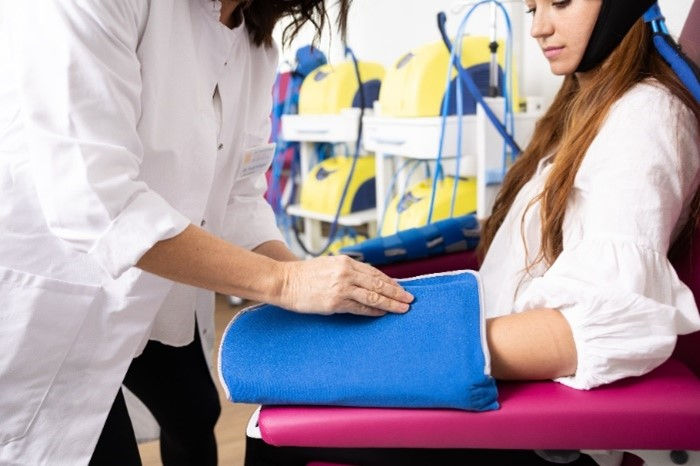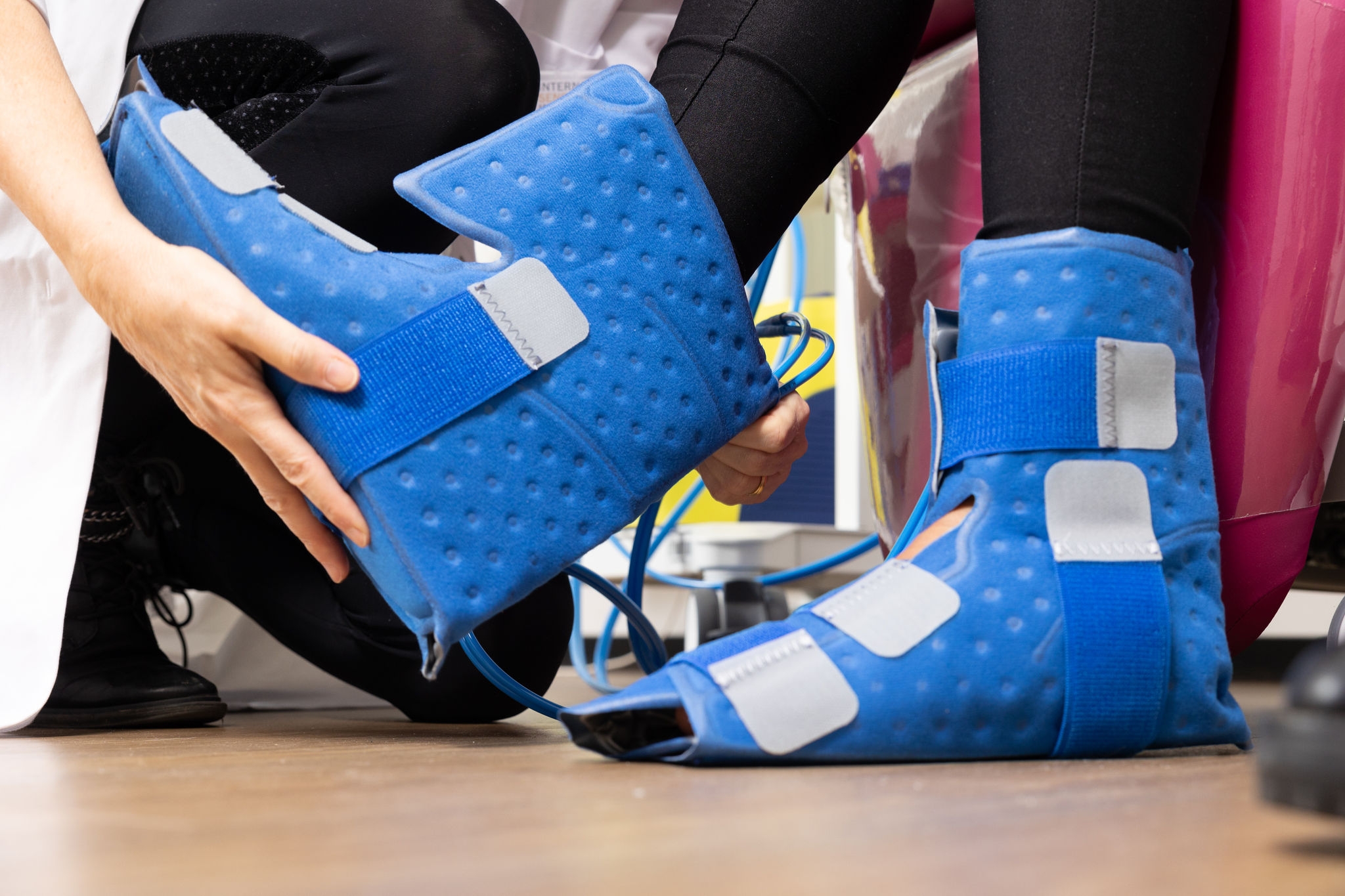Hilotherm® ChemoCare – The Clinical Benefits
A convenient method of delivering cooling therapy to patients’ hands and feet, Hilotherm ChemoCare offers an effective way of minimising chemotherapy-induced peripheral neuropathy and hand-foot syndrome.
As the UK's leading provider of private cancer diagnostics, radiotherapy and systemic anti-cancer therapy, we always look for innovations and the latest technology to deliver the best possible outcomes for our patients.
One such innovation is Hilotherm ChemoCare, designed to prevent or minimise side effects to peripheral nerves caused by anti-cancer drugs.
More commonly known as chemotherapy-induced peripheral neuropathy (CIPN), this condition often manifests in cancer patients due to exposure to taxanes, platinum derivatives and several other chemotherapy drugs.
Its symptoms typically affect the hands and feet of cancer patients, causing severe pain, discomfort and side effects like tingling, numbness and balance issues.
Exposure to these types of chemotherapy drugs, as well as Fluorouracil (5-FU), can also lead to hand-foot syndrome (HFS).
This dermatological condition affects the palms of the hands and soles of the feet and brings symptoms like redness, numbness, swelling, blistering and dry, peeling skin.
Hilotherm ChemoCare is a bespoke solution designed to prevent or minimise the harmful effects of these two conditions, and we're the only healthcare provider to offer it in the UK.
How does Hilotherm ChemoCare work?
Hilotherm ChemoCare is a medical device that delivers cooling therapy to patients' hands and feet. It's designed to prevent the onset of symptoms and alleviate the progression of CIPN and HFS.
Comprised of two hand cuffs and two foot cuffs, the device remains fitted onto patients before, during and after each chemotherapy treatment session.
The length of the Hilotherm ChemoCare treatment each patient receives will vary depending on the symptoms involved:
- For patients not showing signs of CIPN, the cooling therapy will be applied 30 minutes before the start of the session at a standard temperature of 15-17OC. As long as the patient is comfortable with this temperature, the cooling therapy will continue for the rest of the session and 30 minutes after it has finished
- The same process will apply for patients showing signs of CIPN, but the post-treatment time will be extended to 60 minutes
The device's cooling mechanism is designed to perform three key actions: stimulate vasoconstriction in the patient's hands and feet, slow the body's metabolism and lower the skin's temperature.
Because of these actions, this then minimises the chemotherapy treatment's ability to reach nerve endings in the extremities, reducing the likelihood of symptom onset.
Make an enquiry
We invite consultants to contact us to refer to one of our specialists or find out how we can help you and your patients.
What are the clinical benefits of Hilotherm ChemoCare?
The clinical benefits of using Hilotherm ChemoCare at the same time as chemotherapy have been consistently proved through research.
During a systematic review published in the Journal of Oncology Pharmacy Practice, researchers determined that cold therapy was a well-tolerated, reasonable option to consider to prevent CIPN in patients receiving taxane-based chemotherapy.1
This correlated with another study published in the Integrative Cancer Therapies journal, which also proved that Hilotherm ChemoCare was a highly tolerable and effective way to prevent or reduce symptoms associated with CIPN.2
Hilotherm ChemoCare’s data3 also supports these findings; approximately 90% of cancer patients develop grade 1 – 3 symptoms of HFS or CIPN when not using Hilotherm ChemoCare as an intervention. Of this proportion, 50% then develop more severe symptoms4.
Hilotherm ChemoCare has also been shown to have a beneficial effect for patients using it later on in their chemotherapy. Using this device can halt the progression of severe symptoms and prevent any existing symptoms from worsening.
The results from using Hilotherm ChemoCare are highly sustainable as well. Of patients using this solution, 96% have been shown to only have grade 0 – 1 symptoms four weeks after their last chemotherapy session, with 98% symptom-free (CIPN < grade 1) after 12 months.
The heart of innovation
Here at GenesisCare, we continuously focus on treatments and techniques that aim to improve our patient’s quality of life and outcomes. We’re currently the only provider in the UK to offer Hilotherm ChemoCare to patients receiving taxane chemotherapy.
References
- Bailey, A., Brown, J. & Hammond, J. (2021). Cryotherapy for the prevention of chemotherapy-induced peripheral neuropathy: A systematic review. Journal of Oncology Pharmacy Practice. 27(1): 156–164.
- Oneda, E. et al. (2020). Innovative Approach for the Prevention of Chemotherapy-Induced Peripheral Neuropathy in Cancer Patients: A Pilot Study With the Hilotherm Device, the Poliambulanza Hospital Experience. Integrative Cancer Therapies. 19:1534735420943287.
- Hilotherm. (2022). Prevention of Polyneuropathy/Nerve Damage (CIPN) and Hand-Foot Syndrome (HFS). [Online]. Hilotherm. Available at: https://www.hilotherm.com/en/areas-of-application/polyneuropathy
- Schaper T, Rezai M, Petruschke G, Gross B, Franzmann L, Darsow M. Efficiency of controlled cryotherapy in prevention of chemotherapy induced peripheral neuropathy (CIPN). Annals of Oncology. 2019;30:v733.

